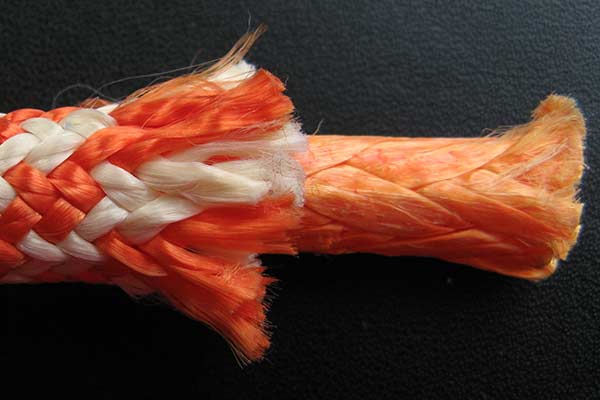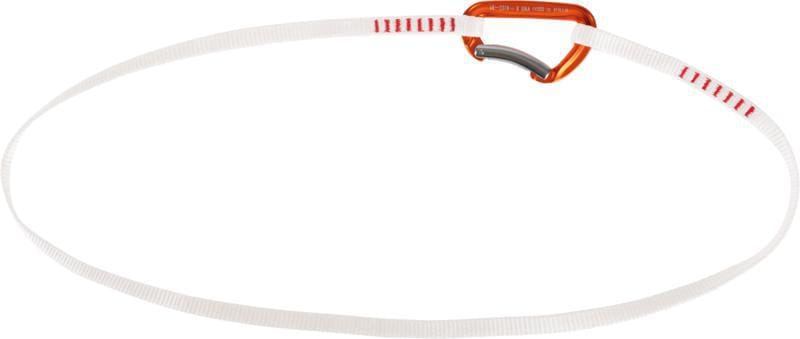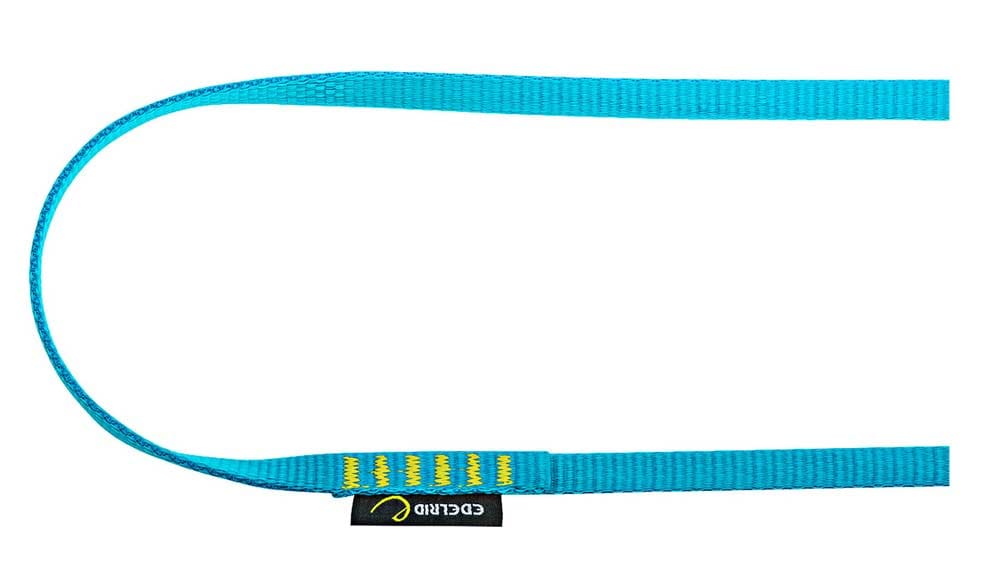Loops and cords are knotted from highly technical fibers. In the material jungle of Kevlar, nylon or Dyneema, the overview can quickly get lost. False information quickly makes the rounds. Dyneema in particular has a bad reputation. Wrongly.
A contribution by Fabian Reichle - Bächli Bergsport
The second half of the last century was characterized by technical innovations - also in alpine sports. The nail shoes gave way to modern mountain boots, high-tech membranes replaced the heavy cotton jacket and the hemp rope, which was questionable in terms of safety, gave way to modern, chemical materials. These materials are complex and understanding them requires intensive material science.
It is therefore not surprising that there is sometimes skepticism and distrust of thin nooses.
There are many rumors, especially about Dyneema slings. They are smooth and super thin: Since Dyneema snares have been in circulation, they have had a difficult stance.
Can you even knot these things properly? They are so narrow that they tear immediately in the event of a fall! And anyway: Dyneema certainly melts incredibly quickly and is destroyed within a very short time by UV radiation. Something like that, unsubstantiated rumors haunt the alpine scene. Much of it is not true.
Small in pack size and light
What is Dyneema anyway? Basically it is a product name of the Dutch company DSM. The material itself consists of so-called polyethylene fibers, which are woven extremely tightly, which results in a small pack size and thus low weight.
Dyneema also owes its smooth surface to these chemically produced fibers - by the way, the main reason why the loops are white, as they are difficult to dye. In addition, they can only be bought sewn.
In a nutshell, that's all the average consumer needs to know about material. Like any other chemical fiber, Dyneema is a high-tech product that requires a great deal of specialist knowledge to be understood. If you still want to read up on the subject, you will find a list of links at the end of this article to delve into the topic.
What is Dyneema holding and what is not?
Dyneema as a safety risk: concerns are justified, because there is obviously zero tolerance for fragile material on the rock. However, such concerns are unfounded. Practical tests have shown that slings made of Dyneema can be used in exactly the same way as its counterparts made of nylon or Kevlar.
It can be knotted very well and stays tip top with knots. The smooth surface is a problem when connecting two Dyneema cords alone. However, this purpose is unrealistic because, as mentioned, the material is always sold sewn.

The situation is different with falls in Dyneema slings. Here the material tears relatively quickly. The point is, however, that it is not Dyneema itself that is decisive, but the fact that static slings are not designed to absorb dynamic falls. Nylon, Kevlar and Co also tear. The differences in the load limits are marginal. And even if the snare holds, the forces on the body when caught can be devastating.
It is exactly the same with friction and the subsequent melting. But also here applies:
The difference between Dyneema and other materials is minimal. The same applies to exposure to UV radiation.
With all the criticism of Dyneema, the perspective is often wrong. Ultimately, it doesn't depend on the material, but on the intended use and handling of static loops and cords. In other words: Never load dynamically, avoid friction as much as possible and be conservative about materials that are permanently exposed to sunlight.
The deep immersion in high-tech materials can be exciting, but it is only conditionally a judgment.
Unfortunately, rumors emerge far too quickly and persist - theoretical speculations quickly turn into non-practical findings.
In short: The thin, smooth Dyneema slings may be a deterrent, but those who use them correctly will learn to appreciate their great advantages - namely their low weight and small pack size.
For all those who are hungry for knowledge - additional links on the subject of Dyneema slings
Further links for everyone who wants to deal with Dyneema
- «FAQ Dyneema»: In-depth article with wear tests. Published in Bergundstieg, issue 3/12. By Chris Semmel.
- "Loops & Stand": Summary article with wear tests. Published in Bergundstieg, issue 1/09. By Chris Semmel, Florian Hellberg and Björn Ernst.
- "Look instead of trust": Background knowledge and practical tips on the area of application of tape slings. Published in DAV Panorama, issue 4/15. By Julia Janotte, Christoph Hummel and Florian Hellberg.
- Dyneema product portrait at the manufacturer DSM (English).
That might interest you
+ + +
Credits: Cover picture Mammut




